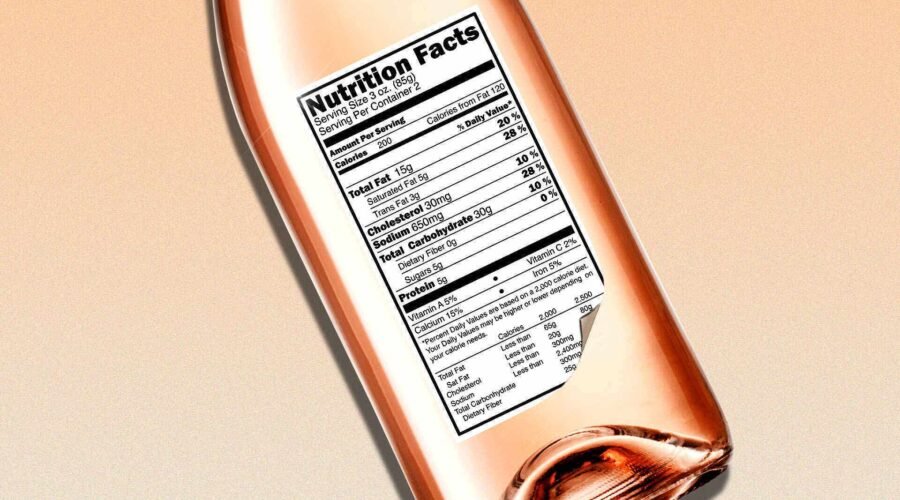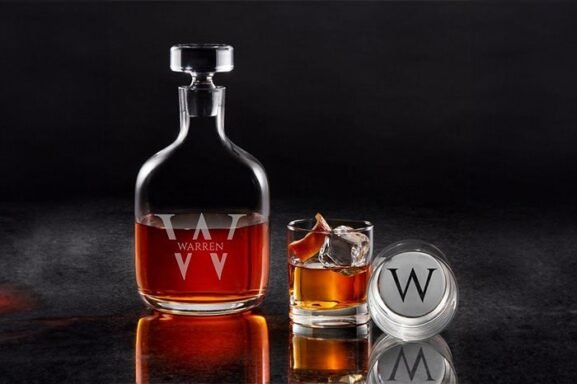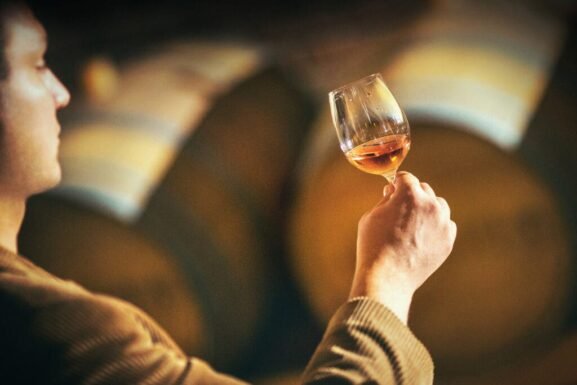Culture: The E.U. Is Adding Nutrition Info to Wine Labels. Is the U.S. Next?
If you drink wine, you probably know there is more in the bottle than fermented grapes. Yet, you likely won’t find those added ingredients listed on the label, nor the wine’s nutritional information. That’s because historically, wine bottles—unlike food products—have not been required to list additional ingredients other than allergens on labels in both the United States and the European Union (E.U.).
However, that’s changing in the E.U. New regulations now mandate that wine labels include a whole lot more information. But will the U.S. follow suit? Here’s a look at where things stand and what it could mean for the wine industry.
A New (Wine) World Order
On December 6, 2021, the E.U. brought forth a new reform called the Common Agricultural Policy (CAP), which went into effect on January 1, 2023. Full details of how these labeling rules will be enforced—essentially, how producers will prove their labels reflect the truth—have not yet been finalized, but should come out this summer.
After a grace period, which runs through December 8, 2023, all wines sold in the E.U. must comply with the new label regulations, including imports.
The new law mandates that wine labels include a full list of ingredients associated with allergies and intolerances, such as sulfites and gluten. (You can view the full list here.) Certain nutritional facts, including calories must also be on the physical label. Other additives and nutritional information (carbohydrates, sugar, protein, etc.) must be provided, too, but can be provided electronically through a QR code printed on the label.
After a grace period, which runs through December 8, 2023, all wines sold in the E.U. must comply with the new label regulations, including imports.
A parallel movement to change wine labels is also afoot in the U.S. In 2022, the Center for Science in the Public Interest (CSPI) and National Consumers League were victorious in a lawsuit against the Alcohol and Tobacco Tax and Trade Bureau (TTB) for failing to act on a petition they filed in 2003 calling for better alcohol labeling laws. CSPI is a Washington, D.C.-based non-profit organization and consumer advocacy group that advocates for safer and healthier foods
“The TTB has agreed to issue proposed rules requiring standardized alcohol content, calorie and allergen [labelling] on all beer, wine and distilled spirits products [and to] begin preliminary rulemaking on mandatory ingredient labeling,” said CPSI in a press release in November of last year.
This was a significant win. Apart from adding the surgeon general’s warning in 1988, current wine labeling requirements in the U.S. have, for the most part, remained unchanged since 1935.
Now, the E.U. rule change is helping to further shift public sentiment in the U.S., says Matthew Simon, deputy litigation director at CSPI. “There’s a momentum, as more than ever consumers demand to know what is in their products,” he explains. Simon believes that a major sea change is afoot as more bottles imported to the U.S. from E.U.-based wineries begin to bear new information laden labels. Mainstream American consumers will start to question the absence of such information on domestic bottles, Simon believes, which could help further clear the path for stateside legislation.
As things stand now, Simon expects new labeling suggestions from the TTB to come out later this year. Of course, “then stakeholders need to comment, the TTB has to then make tweaks and there will be a lag until the companies need to follow.” In other words, it’s going to be a while before U.S. consumers start seeing any changes reflected on wine labels.
What Could This Mean for the Wine Industry? It’s Complicated
“Generally speaking, I support this, but I wonder what the rules will look like and whether they will create difficulties for growers who run smaller wineries,” says Jorge Riera, wine director at the popular Frenchette and Le Rock restaurants in New York.
Martha Stoumen, owner of her eponymous winery in California, shares a similar concern.
“It will hurt [small businesses] more,” she says. Stoumen adds that compliance needed to sell alcohol already represents a burden. “Last year, 15% of my overhead expenses paid just for compliance, and we still do a good amount of the work ourselves to minimize the cost.”
Some like Pascaline Lepeltier, sommelier and co-owner of the New York City restaurant Chambers and partner at Chëpìka, a Finger Lakes wine project, also question whether it’s fair to use QR codes. Yes, the majority of people may have smartphones, but Lepeltier worries about those who may not. Those consumers should also be able to access nutritional information, she believes.
Yet, despite all the potential hardship, Lepeltier and others with qualms about potential new regulations are on board. “This is a subject close to my heart, and I am for it,” says Lepeltier. She believes that if wine producers “are not putting anything harmful in there, they shouldn’t be afraid to put this on the label.”
Todd White, founder of Dry Farm Wines, a natural wine delivery service in the U.S., agrees, pointing out that there are “76 additives allowed for wine treatment and processing in the U.S. While many are safe, natural and have been used for hundreds of years, others are synthetic or chemically derived and can be toxic.”
Roland Benedetti, co-founder of Vintners.co, an online craft wine marketplace, echoes both their sentiments. “Personally, I feel very good about the fact that wine producers putting a lot of additives in their wines won’t be able to hide it,” he says. “This is already reality in food.”
Robert P. Koch, CEO of the Wine Institute, said in an email that he and his organization “applaud the E.U.’s innovative approach in off-label QR code disclosure to minimize the burden on producers while ensuring consumers have access to the information they want.” He sees an upside to the QR code, noting that “non-digital labeling would be much more complicated and costly.”
Some producers also think having clearer, more informative wine labels could help popularize natural wine. For instance, Deirdre Heekin, founder and winemaker of La Garagista winery in Vermont, believes labeling regulations will benefit the craft and natural wine producers who don’t employ additives. When confronted with labels bearing a string of additives, Heekin believes consumers will “question their choices once they see how long this list is.”
In addition, some winemakers say they’ve personally witnessed a need for more detailed labels.
“In 2010, I was invited to a wine gala dinner supporting diabetes research, and chatted with a woman in the bathroom who was self-administering insulin,” recalls Stoumen. “I asked what wines from the evening were her favorite. She told me she hadn’t tried any—she’d been caught off guard in the past not knowing about the residual sugar of what she assumed was a dry wine. It was one of those broken system moments. This woman, who had paid a lot for her ticket to support a health cause very important to her, didn’t know if she could drink the wines that evening.”
The Path Forward
Because it’s still early in the process—both in the E.U. and the U.S.—it’s hard to say the burden smaller producers will bear amid the implementation of new label laws. Not to mention the potential technical hiccups that could arise from electronic label information, for which some industry players are already planning.
“We would love to help independent producers with compliance,” says Benedetti, noting how his company has already created an infrastructure for their clients to use QR codes on their labels.
He and others think the potential obstacles are worth navigating when it comes to giving consumers more nutrition and ingredient information.
“Consumers deserve to know if the taste [of wine] is being achieved through high-quality grapes or something else,” says Simon. “If you’re proud of your product, then you should put it on the label for people to know.”


